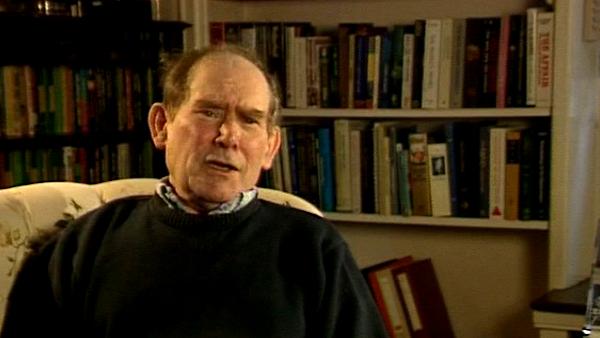NEXT STORY

Microscopy
RELATED STORIES

NEXT STORY

Microscopy
RELATED STORIES


|
Views | Duration | |
|---|---|---|---|
| 31. The Army camps | 374 | 03:19 | |
| 32. Geology: expedition with Alexander du Toit | 1 | 411 | 06:40 |
| 33. To Serve Man | 469 | 07:01 | |
| 34. Language and wordplay | 397 | 02:23 | |
| 35. The Nadi reaction | 370 | 02:06 | |
| 36. My MSc in working out the chromosome complement of Elephantulus | 360 | 04:16 | |
| 37. Microscopy | 371 | 01:34 | |
| 38. Broad academic discussion as a student | 485 | 02:53 | |
| 39. Passing the time with medicine | 359 | 03:51 | |
| 40. Being the best in Obstetrics and Gynaecology | 380 | 01:40 |


After having done my Honours degree, I decided to do a Masters degree; take another year out of medicine, and then maybe I could forget ever going back to it. And what I did then, during this time, was actually begin to study genetics. Now that was done… I'd become very interested in chromosomes and… and genes, and I had then, through the histology and through looking at this, decided that what we really had to know more about was chromosomes. It was there that I had fun, because during my Honours year I read the most... influential book, which was Wilson's book, The… what is it called? The something of the cell, can you remember? The Cell in Development and Heredity [sic]. The Cell in Development and Heredity [sic], and in that book Wilson has a passage in which he talks about chromosomes and in which he says, 'The chromosomes are the bearers… the material bearers of heredity', and that said, 'That's what we've got to get stuck into'. So I decided the only way to do this is you've got to start looking at chromosomes. So I started on onion roots, which is very easy; you just make these in the lab, you can then cut sections of them and you can look at chromosomes, and I started to stain chromosomes then, and it is at that stage that I decided to start to do cytogenetics. Now, there's nobody doing this anywhere in South Africa; in fact I was the first person to do it, and I learnt how to do it by reading two books. One is a completely impenetrable book written by CD Darlington called Recent Advances in Cytogenetics [sic], published I think in 1937. It's about the chromosomes of everything, of animals, and another thing is a little book written by Darlington and La Cour called The Handling of Chromosomes, because this told you how to actually do this, and I actually decided I would work, and since there was a little animal that everybody was interested in… in South Africa, called Elephantulus – the little shrew – we were doing a lot of histology and biology on it – I thought I'd determine the chromosome number of the shrew. And so I learnt about cytogenetics and chromosomes and allocycly and started to read widely from Darlington's book, and essentially that was my Masters thesis. My Master of Science thesis is The Chromosome Complement of Elephantulus. That was the first cytogenetic thing and I published a paper on it as well, and I got it wrong, because I got half the number… that was a… it was an acceptable mistake, but I got the number… it was 14, and it's really 28. But, of course, this was quite… 14, 28 was quite a low number for those days, and then a lot of people took this up; Philip Tobias then did the gerbil and so cytogenetics had become established from this… from this work, but that is the first sort of connection of genes and cells. But in the meantime, I still worked assiduously on trying to find out what went on in cells.
South African Sydney Brenner (1927-2019) was awarded the Nobel Prize in Physiology or Medicine in 2002. His joint discovery of messenger RNA, and, in more recent years, his development of gene cloning, sequencing and manipulation techniques along with his work for the Human Genome Project have led to his standing as a pioneer in the field of genetics and molecular biology.
Title: My MSc in working out the chromosome complement of Elephantulus
Listeners: Lewis Wolpert
Lewis Wolpert is Professor of Biology as Applied to Medicine in the Department of Anatomy and Developmental Biology of University College, London. His research interests are in the mechanisms involved in the development of the embryo. He was originally trained as a civil engineer in South Africa but changed to research in cell biology at King's College, London in 1955. He was made a Fellow of the Royal Society in 1980 and awarded the CBE in 1990. He was made a Fellow of the Royal Society of Literature in 1999. He has presented science on both radio and TV and for five years was Chairman of the Committee for the Public Understanding of Science.
Tags: The Cell in Development and Inheritance, South Africa, Recent Advances in Cytology, The Handling of Chromosomes, The Chromosome Complement of Elephantulus, Edmund Beecher Wilson, CD Darlington, LF La Cour, Phillip V Tobias
Duration: 4 minutes, 17 seconds
Date story recorded: April-May 1994
Date story went live: 24 January 2008